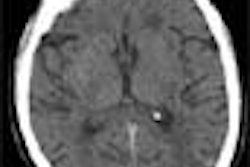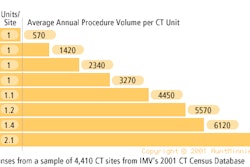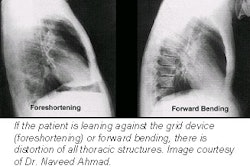CHICAGO – Combining a flat-panel detector (FPD) with digital radiography could reduce radiation doses without loss of diagnostic quality, according to radiologists from Osaka City University Hospital in Japan.
In a poster presentation at the RSNA meeting, radiologic technologist Kenji Okusako and co-authors looked at x-ray exposure reduction on a DR system using an FPD (Digital Diganost, Philips Medical Systems, Dryview 8700 processor; Kodak DV film). They compared those results to images obtained with a storage-phosphor CR system (FCR5000, Fuji Medical Systems; CR-LPD laser wet processor; Fuji CR780 film). Finally, traditional screen films were obtained with the Lanex 400/MXG-1 (Kodak Health Imaging; SRX-251 RF wet type processor; Kodak MXG-1 film).
"The results [of our study] suggested that the FPD system might reduce the radiation dose to one-fourth needed with a CR system, depending on the thickness of the body part being examined," the authors wrote.
In total, 24 films were taken including anterior views of the head and pelvis, as well as lateral views of the lumbar spine, all taken at different dose levels. Six radiologists rated the CR and FPD images as either equivalent to one another, slightly better than one another in quality, or much better in quality.
"We measured the final modulation transfer function (MTF) and examined the overall Weiner spectrum," they said. "Contrast in the CR and FPD systems was adjusted to match that of the screen-film system at the optical density of 1.0."
According to the results, the MTF of the FPD system was almost the same as that of the CR. However, the MTF of the FPD was the highest when lower frequencies were used.
The Weiner spectrum of the FPD system with the standard dose was lower than the other spectra at all frequencies, they said.
In addition, the radiologists preferred films made with the FPD with a half dose to those of CR with the standard dose. Because there was less noise with the FPD, it may be particularly suitable for imaging thicker parts. The researchers concluded that a dose reduction of up to 75% could be achieved with the FPD system without loss of digital accuracy.
By Shalmali Pal
AuntMinnie.com staff writer
November 29, 2001
For the rest of our coverage of the 2001 RSNA meeting, go to our RADCast@RSNA 2001.
Copyright © 2001 AuntMinnie.com



















